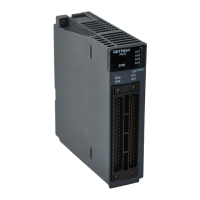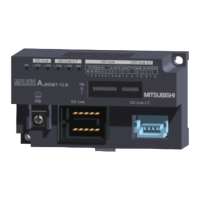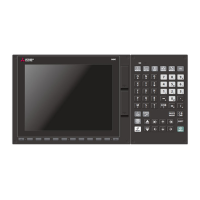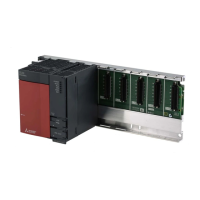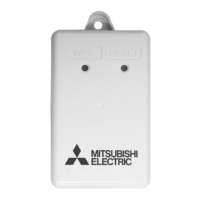mand
VELOCITY
CHANGE Relevant elements:
Fixed speed change com- 1) X0 to X6 (general-purpose input)
2)
Y440 to Y444 (BFM#2 bO to b4)
3.2.1
Multi-stage speed operation
Execution time:
Instantaneous progressing type (1 msec or less)
The instruction is used when execution must be done at a desired speed regardless
of
the movement
distance.
x0
x1
{IT
Speed
+
2,000
+
I
I
1,600
I
I
47
48
49
A
50
-
51
52
B
53
L
54
55
C
56
57
-
-
-
Note
1:
Note
2:
Note
3:
A
-
:.j
tl&f$::',j
I.
BLK
SPD
VCH
SPD
D RV
VCH
SPD
D
RV
VCH
SPD
DRV
END
tns$Tucci;
P
t
X
K
+
Let's operate
A,
6,and
C
by
turning ON the general-
purpose inputs
XO,
X1,
and
X2
sequentially.
Omitted if parameter speed is used.
Instantaneous progress regardless
of
the ON/OFF status of XO.
Set the next speed in a special register.
Drive at speed
3000.
Change
to
2000 when X0 is ON, and then continue.
Instantaneous progress regardless of the ON/OFF status of X1.
Set the next speed in a special register.
Drive at speed
2000.
Change to 1600 when X1
is
ON, and then continue.
Instantaneous progress regardless of the ONiOFF status
of
X2.
The last speed command is always
'0".
Drive at speed 1600. Change to speed
0
when X2 is ON and then continue.
VCH instruction proceeds
to
the succeeding step regardless of the input state, and executes
DRV
2
instruction immediately after reading the
SPD
instruction data. Then, the operation
waits for an input operation such as
XO.
When the input of VCH instruction having been read is turned
ON
while executing the DRV
*
instruction, the operation proceeds
to
the succeeding step after changing to the desired
speed.
A,
B,
C,
...
must
be a consecutive set of instructions. Other instructions cannot be
programmed in between.
Only DRV
*
is valid as the drive instruction, and
0
must be set
to
the final speed command.
After completing the VCH operation, the data of SPD at step
48
is
returned to the
MSR
register.
(If
there is no SPD instruction, the speed designated by the parameter becomes
valid.)
-40-

